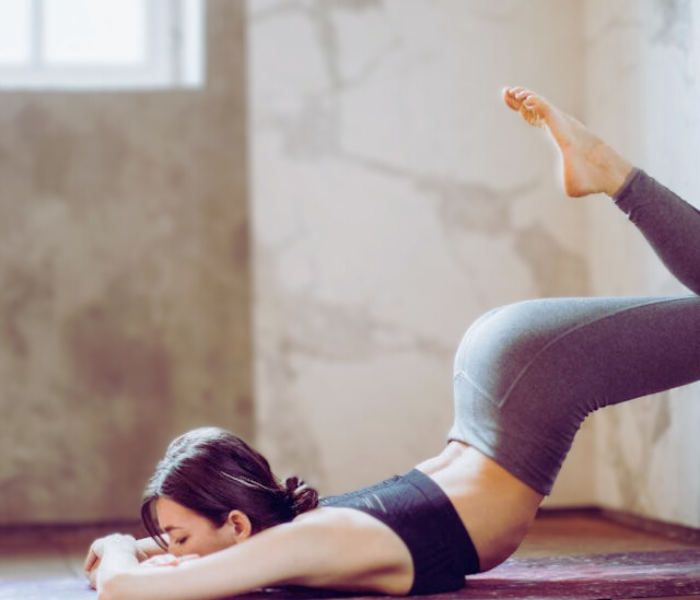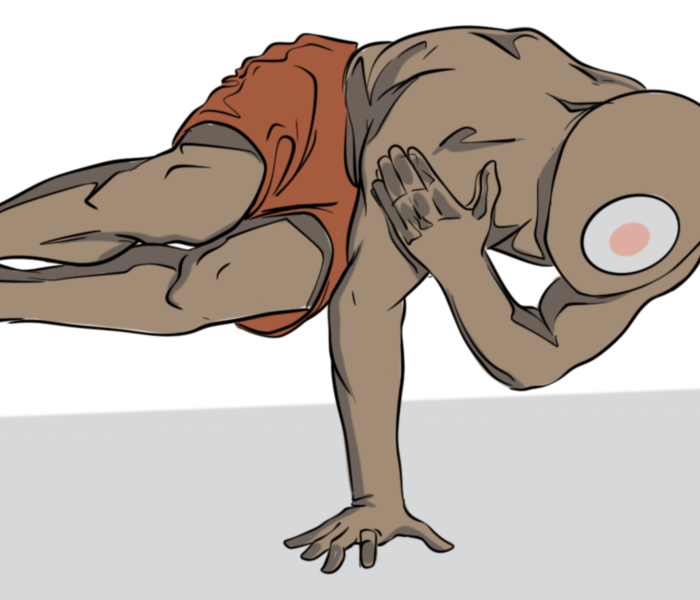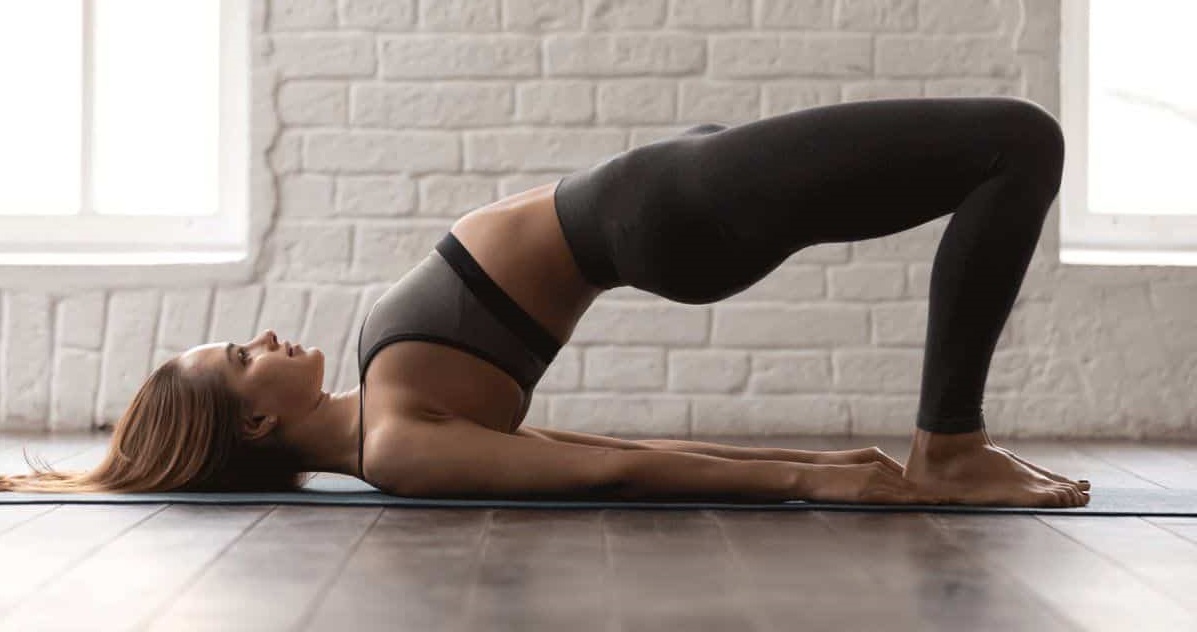surya namaskar – sun salutation

All you need to know about Surya Namaskar
Surya Namaskar (Sun Salutation) is a fundamental element in the yogi community and regular practice of the Sun Salutation sequence holds several benefits. Surya Namaskar is a prayer of appreciation to the sun that works your whole body. Furthermore, it is ideal for people who want to get good exercise in a short amount of time. If you can perform all 12 asanas (yoga positions) in this yoga sequence, you will have completed 288 strong yoga postures.
We shall dissect different elements of Surya Namaskar in this tutorial. As a result, you will learn all you need to know about this asana, including its advantages, how to execute it, the ideal time to practice it, and more. You can also have a look at the top online yoga teacher training programs by just clicking here!
Surya Namaskar (Sun Salutation) is a Hindu salutation.
Surya is the Sanskrit word for sun, while Namaskar is the Sanskrit word for bowing or greeting. As a result, Surya Namaskar is also known as Sun Salutation in English. Each of the 12 postures utilizes a mantra or chant in traditional versions of the asana, and the 12 zodiac signs signify the mantras, providing vitality to the body.
The roots of Surya Namaskar, however, are riddled with inconsistencies. Some believe it originated 2500 years ago during the Vedic era.
It was carried out as a ceremony that included individuals prostrating before the rising sun, reciting mantras, and giving grains and water. Others claim it is a relatively new method created by the Raja of Aundh in the twentieth century.
The Sun Salutation is the first pose that every yoga practitioner learns. “No asana practice is complete without sun worship,” Sri K. Pattabhi Jois said.
If there is a lack of focus on mental energy during the yoga practice, it is mere acrobatics, lacking purpose. Indeed, the Surya Namaskara should never be mistaken for a simple physical workout.
Your best friend for physical and mental growth
The Sun Salutation sequence has a variety of health advantages. It relieves body and mental stress, promotes circulation, regulates breathing, and activates the central nervous system.
According to ancient yogis, this asana also stimulates the Manipura (Solar Plexus) Chakra, which is situated in the navel region and is known as the second brain. As a result, one can expect heightened creative and intuitive skills!
Surya Namaskar postures improve muscular flexibility while also engaging various body parts, which leads to preparing your body for more challenging and robust asanas.
Sun Salutation may also assist you in gaining spiritual understanding and enlightenment. It relaxes the mind and allows one to think more clearly.
Surya Namaskar has undergone various modifications throughout the years, and as a consequence, there are many variants today.
Tadasana (Mountain Pose), Urdhva Hastasana (Raised Hands Pose), Uttanasana (Standing Forward Bend), Uttanasana with head raised, Adho Mukha Svanasana (Downward Facing Dog Pose), Urdhva Mukha Svanasana (Upward-Facing Dog Pose), Chaturanga Dandasana (Four-Limbed Staff Pose).
In the above sequence, you may modify it by adding Navasana (Boat Pose), Paschimottanasana (Seated Forward Bend), and Marichyasana (Sage Pose).
Also Read >>> Yoga Instructor Certification Online
When is the best time to do Surya Namaskar? (Sun Salutation)

Early in the morning is the best time to practice Surya Namaskar. However, if you are short on time, you may do it later in the evening; just make sure your stomach is empty before beginning your yoga practice!
Practicing the Sun Salutation sequence first thing in the morning will revitalize your body and mind. It makes you more active while also preparing your body to take on daily chores with zeal.
Another advantage of doing this yoga routine first thing in the morning is that the UV rays are not as strong.
Consequently, your skin will not be overexposed to the sun, and you will be able to experience the advantages of this asana fully.
Today, you have the finest online yoga teacher training available to you.
If you’re a novice who wants to do Surya Namaskar in the morning, you should begin by practicing it in the evening.
Our joints are more flexible, and our body muscles are more active in the evening, making it simpler to perform different postures.
It is possible to suffer severe repercussions if you perform Sun Salutation with a rigid body. You may start your yoga practice in the morning after you’ve mastered all 12 stages.
This yoga sequence will allow you to establish a strong connection with the natural world when performed outside. You may even do it indoors if the room is well ventilated.
Here’s another bit of beginner’s advice. Begin by doing two rounds of Surya Namaskar every other day.
After that, gradually move to two rounds each day, increasing your sets until you can complete 12 rounds per day. Keep in mind that rapidly increasing your sets may have a detrimental impact on your health.
Surya Namaskar (Sun Salutation): what does scientific research say?
Many of us lead frantic lives. As a consequence, melancholy, stress, and other mental disorders plague us. Surya Namaskar is a yoga practice that relieves such issues while also calming the mind.
According to research published in the International Journal of Yoga and Allied Sciences, Surya Namaskar improves emotional maturity and psychological well-being.
Performing the Sun Salutation sequence has a positive effect on one’s psychological attitude, and at the same time, it enhances attention skills.
In addition, the data revealed that the pupils’ emotional states had improved.
There are now discussions on including Sun Salutation in school curricula.
A group of 64 students participated in a study and found that after a month of practicing this yoga routine, the children’s attention spans had significantly improved.
Another study looked at the cardiovascular effects and breathing systems, finding that frequent practice of Surya Namaskar reduced children’s heart rate, blood pressure, and respiration rate.
There was also a substantial increase in vital capacity and peak expiratory flow rate. The Sun Salutation sequence promotes healthy functioning of the lungs, respiratory system and also improves handgrip strength.
A holistic exercise
Every part of your body stretches and becomes activated during Surya Namaskar. The Sun Salutation sequence also improves muscular strength and endurance. Regardless of whether you are a man or a woman, regular practice of the Sun Salutation aids in the development of a strong upper body.
It also increases the strength of your lower body muscles and your back muscles.
According to the same study, practicing Surya Namaskar reduces female body weight dramatically instead of with men.
Many women employ various weight-loss methods, including medications, gym workouts, and tight diets, all of which may be harmful to their health. On the other hand, Sun Salutation is a natural way to maintain a healthy BMI (BMI).
A recent study showed that six Asian volunteers practicing Surya Namaskar for two years increased their heart rate and oxygen consumption.
In addition, it was found that a 60 kg person expended 230 kcal after a 30-minute exercise. Furthermore, the higher heart rate was ideal for generating the cardiorespiratory impact.
This research proved that Sun Salutation is helpful to individuals who want to lose weight and enhance their cardiorespiratory fitness.
Surya Namaskar: a great tool for the whole body
The article Surya Namaskar: A Path to Good Health provides further evidence for the benefits of this yoga sequence, as it states that consistent practice of the 12 asanas improves the endocrine system’s function.
The pancreas, thyroid, adrenal, and pituitary glands are the primary targets. It also explains how Sun Salutation may help individuals with neurological problems, metabolism syndrome, and menstruation-related disorders strengthen their peripheral and autonomic nervous systems.
Diabetes patients who practice Surya Namaskar lower their blood sugar levels substantially, according to the research.
Furthermore, this yoga method reduces oxidative stress in the body, a major cause of diabetic problems, and plays an integral part in insulin resistance.
Even though this yoga sequence has been around for centuries, the scientific world has only recently begun paying attention to it. As a result, multiple research projects have had positive outcomes.
However, the existing data is still insufficient. More studies are needed to adequately comprehend, appreciate, and use the full potential of Surya Namaskar.
We hope that the information provided above, as well as the study papers, will set your mind at ease and enable you to perform Sun Salutation confidently.
How many steps are there in Surya Namaskar?
The Sun Salutation sequence (Surya Namaskar) is made up of 12 distinct poses. We’ll go through how to do each of them correctly in this section.
Also Read >>> Best Online Yoga Classes
Pranamasana (prayer pose)
The first position in the yoga sequence is Pranamasana. To do this position, make sure your feet are next to one other and that you are standing straight on your mat. Next, take a deep breath and relax your shoulders by expanding your chest.
Raise your arms to the side during inhale and bring your palms together as if praying during exhalation. The first prayer position is complete.
1. Uttanasana (Hasta Uttanasana) (Raised Arms Pose)
Similar to the last prayer position, make sure your hands are linked together. Take a deep breath, raise your arms, and bend backward gently. Keep your biceps near your ears.
2. Hasta Padasana (Standing Forward Bend Pose)
Take a deep breath out and lean forward from the waist. Attempt to touch the ground with your hands. Make sure that your spine stays straight. You should exhale slowly and deeply while executing this posture.
3. Ashwa Sanchalanasana (Ashwa Sanchalanasana) (Lunge Pose)
Bend your knees slightly so that your hands lie near your feet on the floor. Take a deep breath and extend your left leg back while bringing your right knee to the right side of your chest. Raise your brows and gaze forward.
4. Chaturanga Dandasana (Chaturanga Dandasana) (Plank Pose)
Inhale and return your right leg to its original position. Both of your hands should now be just under your shoulders, and the body perpendicular to the ground.
5. Ashtanga Namaskara (Ashtanga Namaskara) (Eight Limbed Pose)
Salutations with eight points or sections is another name for this. Exhale and gently lower your knees to the floor after completing Chaturanga Dandasana. Keep your hips hanging in the air while resting your chin on the floor. Your hands, knees, chin, and chest should all be on the ground while your hips are suspended in mid-air if done correctly.
Pranamasana (continued)
6. Bhujangasana (Bhujangasana) (Cobra Pose)
Lay down on the ground with your legs and midsection. Place your palms against your chest. To lift your upper body, inhale and apply pressure to your hands. Your head and body will resemble a cobra with a raised hood at this stage.
7. Adho Mukha Svanasana (Adho Mukha Svanasana) (Downward Facing Dog Pose)
Maintain the position of your palms and feet. Exhale and gently raise your hips to create an inverted “V” in your body. Straighten your knees and elbows. Take a look at your navel.
8. Ashwa Sanchalanasana (Ashwa Sanchalanasana) (High Lunge Pose)
Return to Ashwa Sanchalanasana by putting your right foot forward after completing Adho Mukha Svanasana. Then, look ahead while keeping your left leg extended behind you.
9. Hasta Padasana (Standing Forward Bend)
Inhale and move your left foot forward until it is parallel to your right foot. Exhale and gently bend your body into the Hasta Padasana posture, keeping your hands in the same place.
10. Uttanasana (Hasta Uttanasana) (Raised Arms Pose)
Take a deep breath and raise your upper body. Next, raise your arms over your head and join your palms. Then, like in step 2, bend backward.
11. Pranamasana (Prayer Pose)
The prayer pose is the last stage in this process. Take a deep breath out and stand tall and comfortable. Next, lower your arms to your sides and place your hands in front of your chest. The first set of Surya Namaskar is now complete. Now time to do the second set with your left leg!
Also Read >>> Healy Energy Frequency Device Review
Beginners often make the following mistakes while doing Sun Salutation:
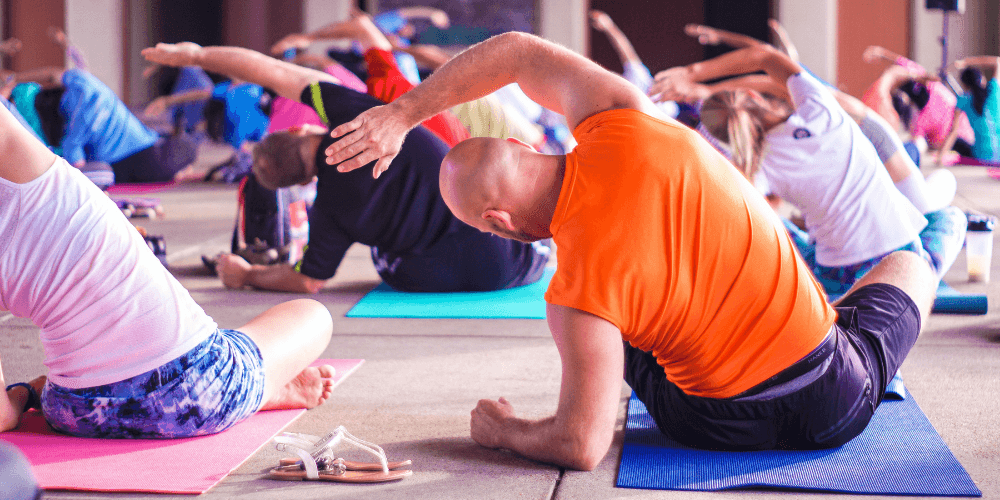
1. Failure to correctly execute breathing methods
You must coordinate your bodily movements with your breathing during yoga and naturally during Sun Salutation. Giving up your breathing methods in exchange for activity does not provide the intended results. Slowly but steadily practice.
2. Not doing Hasta Uttanasana
By skipping Hasta Uttanasana, the cyclic equilibrium of breathing and movement can be disrupted. It also prevents you from strengthening and decompressing your spine and puts your neck under unneeded pressure.
3. During Chaturanga Dandasana, the lower spine is dropped.
Beginners often put pressure on their lower spine when executing the Four-Limbed Staff Pose, and the lower body dips toward the floor, causing back discomfort for some.
Instead, start by pressing your legs and hands into the earth. Then, engage your stomach and upper body muscles after that. Your spinal cord will remain erect as a result of this.
4. The Cobra Pose and the Upward Facing Dog Pose are often confused.
The Cobra Pose and the Upward Facing Dog Pose are often confused by practitioners (Urdhva Mukha Svanasana). As a result, they execute neither posture but rather something entirely different.
It is advised that you learn the Cobra Pose first to prevent being confused. After this sequence, you may go ahead and practice the advanced dog yoga postures individually.
5. Doing Ashwa Sanchalanasana without going forward
The transition from Downward Facing Dog to Equestrian Pose towards the conclusion of the Sun Salutation sequence may be difficult, particularly if you’re trying to slide your foot between your hands.
Beginners’ knees can be stretched far further than they should be. By putting too much strain on your knees, and your hip flexors aren’t stretching correctly. To avoid making this error, consider bending your knees a bit longer and then moving your foot backward.
Beginners often make the following mistakes while doing Sun Salutation (continued):
6. Not fully warming up
Apart from warming up, cooling down after an exercise, including yoga, is equally important. Start with some gentle stretches and joint rotation before performing Sun Salutation. Finish with some calming stretches once you’ve completed the program.
Many novices skip minor warm-up activities in favor of diving straight into their Surya Namaskar practice. Unfortunately, muscle injuries may result from this.
7. Increasing the number of sets on a constant basis
For beginners, four sets of Surya Namaskar should be performed every day, with the number of rounds gradually increasing. This will allow you to fully comprehend the motions involved in all of the yoga postures. You may also modify the asanas to your requirements if necessary to make them more helpful.
8. There is an incomplete cycle.
After completing all of the postures in Sun Salutation, you must return to Pranamasana. One cycle has already come to a close, and you’ll begin a new cycle following that. Many beginners, however, miss this position, resulting in an incomplete circle.
9. Improper Alignment
Every posture in Surya Namaskar demands your full attention and must be executed properly. Misalignment problems may cause joint discomfort, muscular strains, and worsen back pain. So, when training, remain aware of your surroundings and be in the present moment.
10. Completing all 12 sets in one sitting
Surya Namaskar should be performed gradually. Some pupils, on the other hand, attempt to finish all 12 rounds at the same time. They are unable to stop because they are afraid of losing their momentum.
This is something you should avoid. It is preferable to take frequent pauses and work at your own pace. While building momentum may make it easier to complete the sets, it is not necessary for this yoga practice.
Surya namaskar’s top 11 benefits
The Sun Salutation has several health advantages. Here’s what they’re all about:
1. You get a more toned and flexible physique.
The many postures of Surya Namaskar activate different areas of your body. As a result, you become toned, more flexible, and your general posture and balance improve.
2. Loss of weight
Regular practice of this yoga method increases your metabolism, which aids in weight loss in the abdominal region. It also extends your abdominal muscles, improves your skeletal muscles, and keeps undesirable fat from accumulating in these areas.
3. Gorgeous hair and skin
Surya Namaskar is a yoga practice that improves blood circulation. As a consequence, your skin’s natural shine returns. It also helps to prevent wrinkles, hair loss, and greying of the hair. As a result, you will seem more young and radiant- and who doesn’t love that?
4. Hypertension and heart-related issues
Sun Salutation is a natural treatment for high blood pressure. It’s also great for heart muscles, and it’s an excellent method to get rid of irregular heartbeats. This yoga practice also helps to lower blood sugar and reduces your chance of having a heart attack while promoting eye, kidney, and nerve health.
5. Increases energy and alertness.
This practice, like other asanas, emphasizes breathing exercises. This helps to calm your mind while also sharpening your brain. When you combine a calm mind with a healthy body, your energy levels increase, becoming more self–aware.
6. Nutrient absorption improves
People in today’s world don’t have time to sit down and eat a nutritious dinner. You may improve your digestive system and avoid numerous illnesses by practicing Surya Namaskar regularly.
It is simpler for the body to absorb nutrients when digestion is improved. Better nutrition absorption helps the body balance hormones and execute essential tasks.
Surya namaskar’s top 11 benefits (continued)
7. Emotional stability and reduction of mood swings
Deep breathing methods, in combination with specific asanas, have a beneficial impact on nerve cells. Sun Salutation is helpful to the brain. It may help you achieve a feeling of equilibrium between the left and right sides of your brain. Sun Salutation improves your emotional stability as well as your cerebral and creative skills.
Furthermore, Surya Namaskar enhances the functioning of your endocrine system- particularly your thyroid glands. General anxiety and mood swings are reduced as a result. It also has a relaxing effect, which makes it easier to focus and think properly.
8. Assists in the regulation of the menstrual period
This yoga practice may help women with irregular periods manage their menstrual cycles and reduce severe menstrual cramps. In order to see the full benefits of this practice, it is highly encouraged to obtain a daily practice.
9. Insomnia no more
Insomniacs can benefit from Surya Namaskar. It relieves stress and anxiety, calms the mind, and helps you sleep. It also prevents you from becoming dependent on drugs to get you to fall asleep.
10. Removes toxins from your body
The inhalations and exhalations are critical components of the Sun Salutation. It may aid in the healthy functioning of your lungs if done correctly. Additionally, the quantity of fresh oxygen delivered to your blood rises- thus detoxifying your body by releasing carbon dioxide and other gases from your system.
11. Improved bone health
Vitamin D deficiency weakens a person’s bones and may lead to skeletal abnormalities. Vitamin D deficiency can also increase the risk of heart disease and early mortality. Because Surya Namaskar is performed with your back to the sun, it aids in absorbing Vitamin D. This keeps both your bones and your body in good shape.
Limitations to Sun Salutation
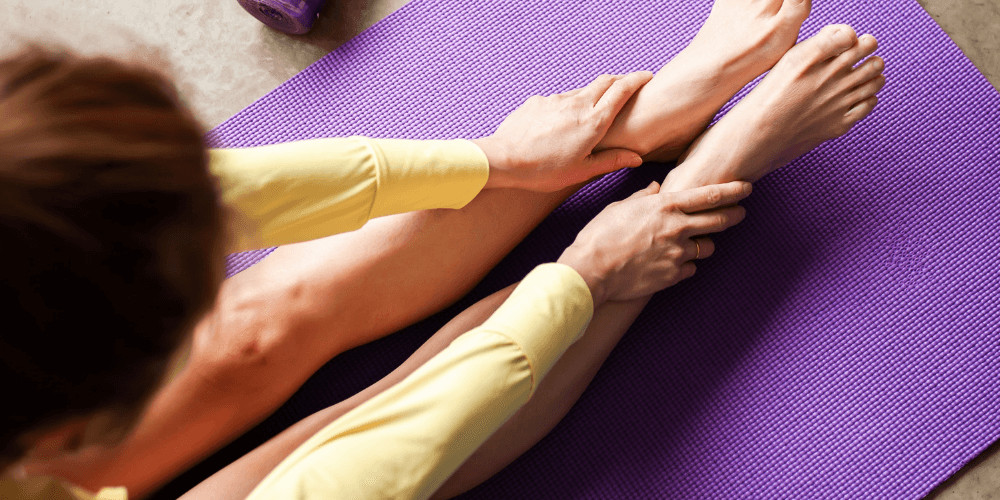
Despite its numerous advantages, you should avoid practicing the Surya Namaskar if you have any of the following conditions:
Before beginning this yoga practice, individuals with heart conditions should get medical advice.
If you have back issues, you should practice the Sun Salutation sequence with the help of your yoga instructor.
This sequence should be avoided by those who have particularly high blood pressure.
Arthritis causes knee stiffness, which limits movement. If you have arthritis, you should avoid doing Surya Namaskar since it includes knee motions.
Sun Salutation should be avoided by those who have hernias.
This yoga routine is not recommended if you have a serious wrist injury.
Pregnant women should not do the Sun Salutation sequence since it exerts strain on the back and abdomen, hurting both the mother and the fetus. Women should also avoid Surya Namaskar during the first three days of their period.
Seniors’ chair Sun Salutation
There is always the option of altering the Sun Salutation sequence by utilizing a chair for those who have restricted mobility, injuries, or other circumstances that prohibit us from doing the complete Sun Salutation.
1. Start with the chair’s back behind you. It may be helpful to have a pillow beneath your buttocks and a cushion on your lower back to support your back.
2. On an inhalation, raise the arms over the head and lean back lightly against the chair’s back, being cautious not to allow the neck to fall too far back.
3. Exhale and gently drape your torso over the legs, moving the hands down the shins, maintaining a straight back.
4. Return to a sitting posture on inhalation by sliding the hands back up and bringing the right knee towards the chest. Next, lean back in the chair and open up your chest.
5. Round the back and bring the head towards the knee while lowering the shoulders on an exhale.
6. Let go of your right leg. Repeat on the other side.
7. After you’ve completed both sides, extend your arms over your hands and lean against the back of the chair to do another forward bend, then return to an upright posture with your hands in prayer position.
The Sun Salutation is the most common yoga practice.
There is no better choice than Surya Namaskar if you have limited time to spare for a regular exercise program but want to remain healthy.
Despite the fact that it is a centuries-old yoga practice, it has been the focus of the research community in the contemporary world due to its demonstrated track record of enhancing a person’s lifestyle. Regular Sun Salutation practitioners will see major changes in their life, both physically and spiritually.
We hope that this post has answered all of your concerns and dispelled any worries you may have had about the Sun Salutation sequence. Always keep in mind that any yoga routine requires focus, patience, and dedication. The Surya Namaskar is no exception. So don’t hurry anything; instead, take your time and enjoy yourself.
Take a peek at our blog if you want to learn more about yoga. Also, don’t forget to sign up for our newsletter to get frequent updates on different asanas.
